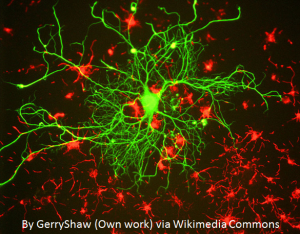Do the BAM Proponents Even Understand Open Access?
In another expression of spectacular political tone-deafness, the proponents of the new mega-neuroscience Brain Activity Map (BAM) project have released a new outline of their plan behind a paywall at Science magazine. Really? Not a great start for a project from which the authors suggest “data…should be made immediately public and accessible to all researchers.”
But since they’ve chosen to block wider access to the paper, let me provide a brief summary, as I did for the original BAM Neuron paper (which eventually was posted to open websites).
First I should say this is a much shorter article, only about a page and a half (Alivisatos, et al. 2013). Since it appeared in a column called Science Express, perhaps we can surmise that it is meant to respond to some of the criticism of the previous paper that has been voiced since the New York Times first suggested the project might actually be funded in an upcoming budget proposal. Among others, the paper also now includes authorship participation from Terrence Sejnowski, a highly respected researcher in mathematical/computational neuroscience at the Salk Institute.
The paper begins by pointing out that the basic neural mechanisms that underlie thinking and action have not been adequately illuminated by methods study the activity of single neurons or by those, like fMRI, that collapse the activity of millions of neurons into a single reading. The authors suggest that understanding the brain requires a large-scale effort to map the activity of entire neural circuits at millisecond resolution. The BAM project, they say, is “essentially a technology-building research program…” They go on to suggest three goals: to develop tools capable of recording individual neural activity of all the cells in a circuit possibly containing millions of cells; create methods to actually control the activity of individual cells in such a circuit; and finally, to develop infrastructure and analysis technique for the massive data sets that will result (with open access for other scientists).
Alivisatos et al. argue that the project will begin with ‘smaller-scale circuits’ in model organisms but maintain a goal of scaling up to create minimally invasive techniques for human brains as well. They hope the project will be international in scope, with collaboration small and large labs from industry as well as academia. The goal is to monitor/control tens of thousands of neurons within 5 years, scaling up to a million within 15 years, thus providing a comprehensive characterization of say a zebra fish brain, or several areas of a mouse cortex.
The authors reassert the translational science goals of the BAM project, suggesting that ‘intelligent nanoprobes’ could help stabilize errant brain networks, and allow novel diagnostic and treatment modalities for degenerative brain disorders as well as psychiatric illnesses.
Finally, Alivisatos et al. claim that they are merely trying to catalyze coordinated action from scientists and administrators, and that the project would produce technology with extensive scientific and commercial applications. They propose that funding should not come from existing projects, but from a new public/private initiative, one that would ultimately produce scientific and economic benefits similar to those of the Human Genome Project.
Alivisatos AP, Chun M, Church GM, Deisseroth K, Donoghue JP, Greenspan RJ, McEuen PL, Roukes ML, Sejnowski TJ, Weiss PS, Yuste R. The Brain Activity Map. Science. 2013 Mar 7.
Photo Credit: By GerryShaw (Own work), via Wikimedia Commons


[…] for recording from and analyzing data from massive numbers of cells. Finally, I provide a quick summary of the more recent BAM outline that appeared behind a paywall at Science (though now linked above […]
[…] I’ve pointed out in a previous post, the optics of releasing the two BAM proposals behind paywalls (at least initially) seemed designed […]
[…] you had any qualms about the media savvy of the proponents of the-project-formerly-know-as-BAM, you can now rest assured, because now […]
[…] procedures and that the funding mechanisms will not siphon off resources from other projects. They still can’t seem to figure out how to get Science to publish their white papers outside the paywall, and there has also been […]